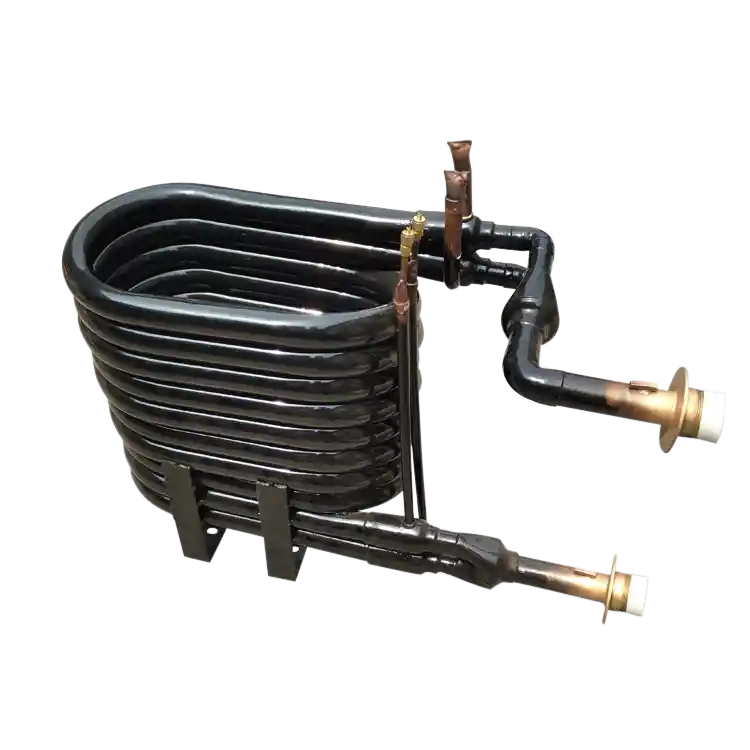Introduction
Insulation plays a crucial role in the production process of coaxial heat exchangers as it helps minimize heat loss, improve energy efficiency, and maintain temperature differentials. This article delves into various insulation materials commonly used in coaxial heat exchangers, highlighting their properties, advantages, and disadvantages. By understanding the characteristics of different materials, manufacturers can make informed decisions to optimize the insulation performance of their coaxial heat exchangers.
1. Polyurethane Foam Insulation
Polyurethane foam insulation is a widely used material due to its excellent insulating properties and ease of application. Here are the key features of using polyurethane foam insulation in coaxial heat exchangers:
| Properties | Advantages | Disadvantages |
|---|---|---|
| Thermal Conductivity | Low thermal conductivity, reducing heat loss | May degrade over time in harsh environments |
| Versatility | Can be molded to fit various shapes and sizes | Requires proper installation techniques |
| Moisture Resistance | Resistant to moisture absorption | Limited temperature resistance |
| Cost-effective | Relatively low cost and widely available | May emit volatile organic compounds during curing |
2. Mineral Wool Insulation
Mineral wool insulation, made from mineral fibers, is known for its excellent thermal and acoustic insulation properties. Here are the key features of using mineral wool insulation in coaxial heat exchangers:
| Properties | Advantages | Disadvantages |
|---|---|---|
| Thermal Conductivity | Low thermal conductivity, reducing heat loss | Can be susceptible to moisture absorption |
| Fire Resistance | Excellent fire resistance | Relatively high cost compared to other materials |
| Sound Absorption | Effective in reducing noise transmission | Requires additional protective coating for use in humid environments |
| Durability | Resistant to compression and settling | Can release fine particles during handling |
3. Fiberglass Insulation
Fiberglass insulation is a popular choice for its thermal efficiency, affordability, and wide availability. Here are the key features of using fiberglass insulation in coaxial heat exchangers:
| Properties | Advantages | Disadvantages |
|---|---|---|
| Thermal Conductivity | Low thermal conductivity, reducing heat loss | Can irritate skin, eyes, and respiratory system |
| Cost-effective | Relatively low cost and easy to install | Susceptible to moisture damage if not properly protected |
| Versatility | Can be tailored to fit various shapes and sizes | May settle over time and lose insulation effectiveness |
| Fire Resistance | Offers good fire resistance properties | Lower sound absorption compared to other materials |
4. Comparison and Considerations
To aid in the decision-making process, the following table provides a comparison of the different insulation materials commonly used in coaxial heat exchangers:
| Material | Thermal Conductivity | Moisture Resistance | Fire Resistance | Cost | Versatility | Durability |
|---|---|---|---|---|---|---|
| Polyurethane Foam | Low | Resistant | Limited | Relatively low | High | Moderate |
| Mineral Wool | Low | Can be susceptible | Excellent | Relatively high | Moderate | High |
| Fiberglass | Low | Susceptible | Good | Relatively low | High | Moderate |
When selecting the insulation material, manufacturers should consider factors such as thermal conductivity, moisture resistance, fire resistance, cost, versatility, and durability. Additionally, specific protective coatings or coverings may be required to enhance the insulation’s performance in harsh environments or to meet specific regulatory standards.
Conclusion
The selection of the insulation material is crucial for optimizing the energy efficiency and thermal performance of coaxial heat exchangers. Polyurethane foam insulation offers excellent thermal resistance and versatility. Mineral wool insulation provides superior fire resistance and sound absorption properties. Fiberglass insulation offers a cost-effective solution with good thermal efficiency.
By understanding the properties and trade-offs of different insulation materials, manufacturers can make informed decisions to enhance the insulation performance of their coaxial heat exchangers. Selecting the most suitable insulation material ensures reduced heat loss, improved energy efficiency, and enhanced overall performance of the heat exchanger.


